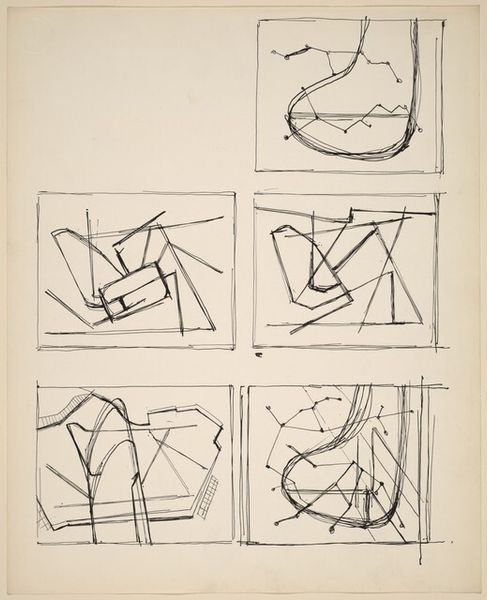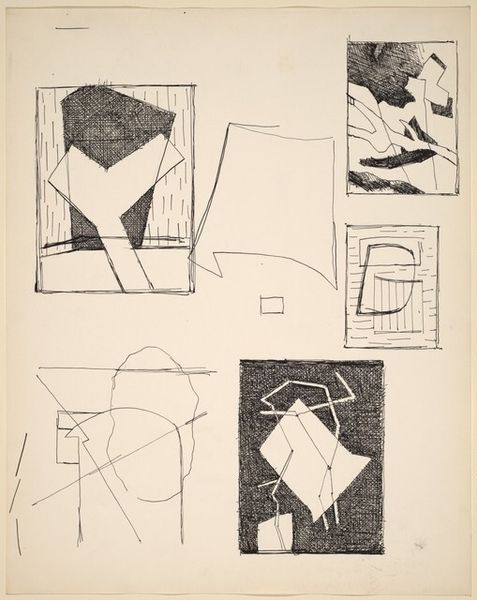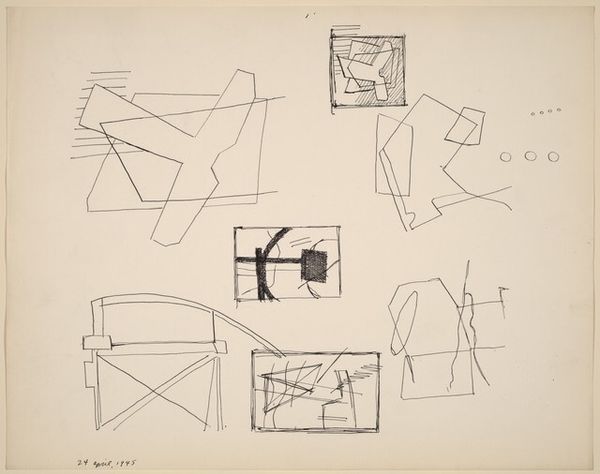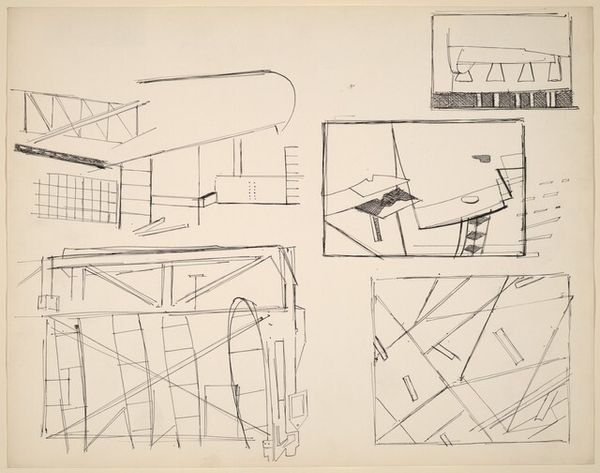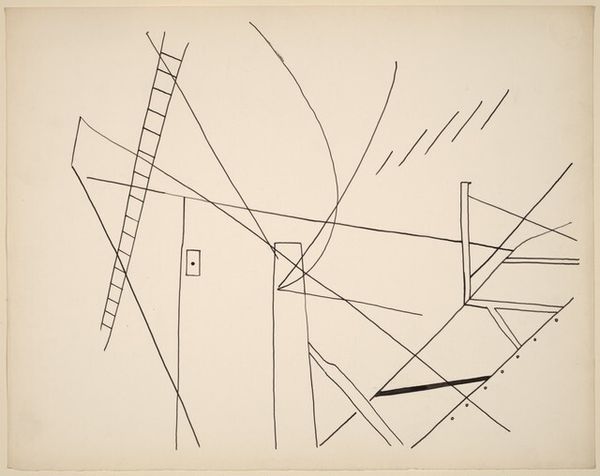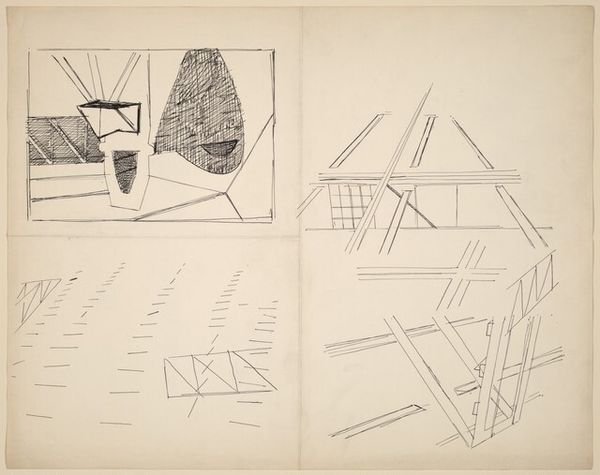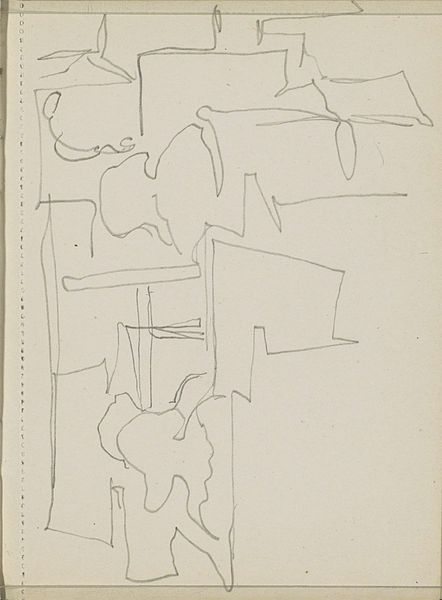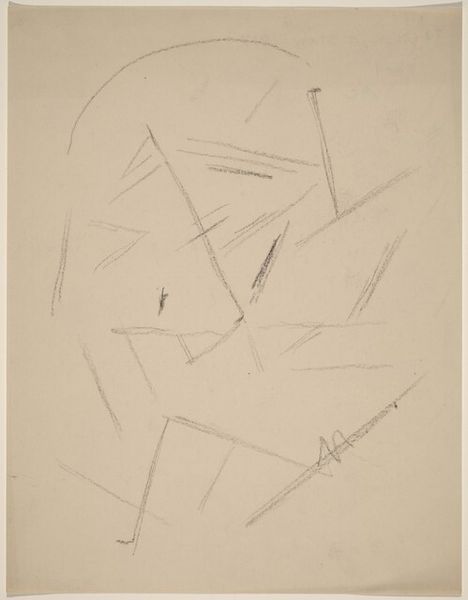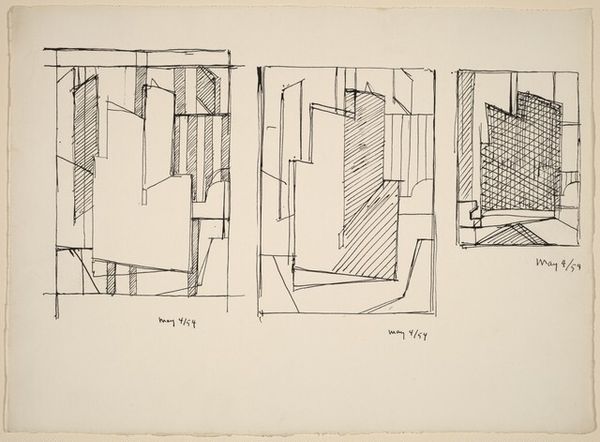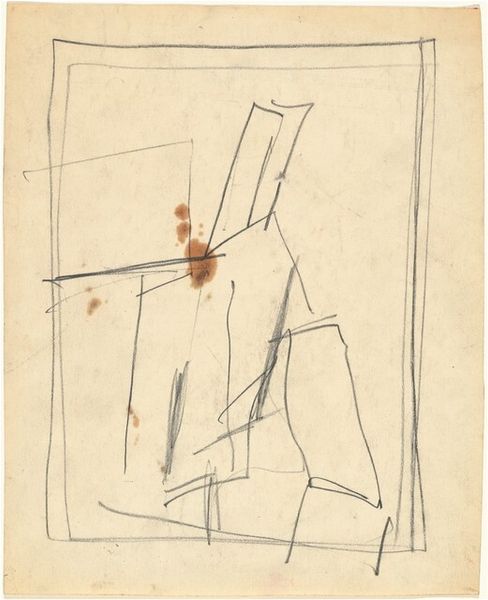
drawing, ink
#
drawing
#
pen sketch
#
abstract
#
ink
#
geometric
#
cityscape
Dimensions: overall: 37 x 29.4 cm (14 9/16 x 11 9/16 in.)
Copyright: National Gallery of Art: CC0 1.0
Curator: Before us, we have Ralston Crawford's "Four Aerial Studies," dating back to the 1940s, rendered in ink. It presents a fascinating series of abstracted aerial perspectives. Editor: They remind me of something seen quickly from above. Slightly unsettling, but visually exciting. Like architectural shards glimpsed from a plane. Is that ink wash in the first sketch, almost creating depth from shadow? Curator: Exactly. Crawford seems to be playing with positive and negative space here, in an almost Cubist manner. I find his use of line particularly interesting; each sketch has a unique linework approach. Editor: Those fragmented geometric shapes! Is this abstraction hinting at something deeper, beyond the purely visual? The lines almost mimic flight paths, but they also suggest networks, connections. Curator: I think you are right. The imagery echoes the kind of complex, interconnected infrastructure that took off at the same time as commercial flight. These are studies. A sort of early cartography that considers air travel. And while his perspective appears cold and mechanical, there’s an implicit commentary on the increasingly geometricized modern world that the artist seems drawn to and maybe wary of. Editor: There’s also a connection, I feel, to those aerial reconnaissance images of that era... military use versus this study in art. Do you think the war had any part in this geometry, which seems quite somber in tone and expression? Curator: Considering the date, that seems likely, and worth deeper exploration. In any case, these "Aerial Studies," although small, really make you wonder about what other, less obvious landscapes we construct and inhabit. Editor: Yes, what an uncanny mix of familiar and alien perception—like peering into our collective spatial unconscious, somehow organized by flight.
Comments
No comments
Be the first to comment and join the conversation on the ultimate creative platform.
